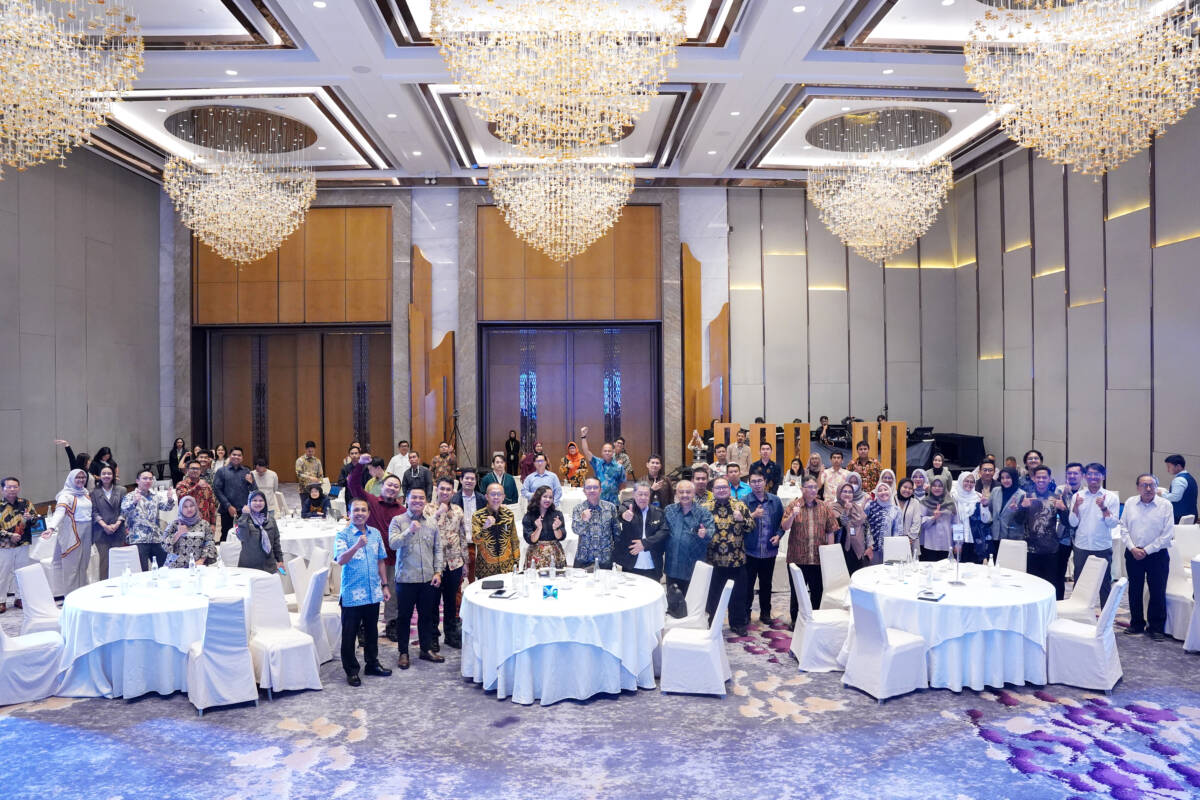Jakarta, July 30, 2025 – Solar energy will be the backbone of Indonesia’s future energy system. PLN’s 2025-2034 RUPTL targets an additional 17 GW of solar power capacity.
The Institute for Essential Services Reform (IESR) assesses that to support the large-scale solar energy deployment agenda, Indonesia must build a robust solar energy support ecosystem. This ecosystem encompasses a policy framework, industrial infrastructure for solar power plant components, and an incentive system that must be carefully designed to encourage the adoption and growth of the solar energy manufacturing industry.
Fabby Tumiwa, Chief Executive Officer (CEO) of IESR, in his opening remarks at the Dissemination of the Study: Development of a Supply Chain Roadmap for the Solar Power Plant Industry in Indonesia, organized by IESR (July 30), stated that geopolitical factors play a significant role in the global solar energy manufacturing supply chain.
“Indonesia needs to develop a photovoltaic (PV) industry to increase national energy independence and resilience. An integrated supply chain can reduce the risk of global disruptions and import dependence,” said Fabby.
Fabby emphasized the importance of creating substantial and stable domestic demand to grow the domestic solar manufacturing industry.
Alvin Putra Sisdwinugraha, Power Systems and Renewable Energy Analyst at IESR, said that Indonesia has the potential to develop a solar energy supply chain industry, both upstream, such as polysilicon and wafers, and downstream, such as solar cells and modules.
“The Indonesian solar power plant industry has high potential, but domestic industrial readiness is still lacking. The supply chain is still inefficient and unintegrated, thus preventing optimal economies of scale. Adequate research and development (R&D) support is also limited,” Alvin explained.
Alvin continued, explaining that to overcome these challenges, market creation and R&D support are crucial. Furthermore, a nationally agreed-upon roadmap by multi-sector stakeholders is needed to ensure integrated industrial development.
Solehan, Director of the Agricultural Machinery and Equipment Industry at the Ministry of Industry, welcomed the study and the proposed roadmap. He explained that the government is currently supporting the development of the solar energy industry supply chain through several means, including creating supporting regulations, providing technical training, building partnerships and collaborations, and providing subsidies and incentives.
“We also noted (from the study) that we must also develop the upstream photovoltaic manufacturing sector,” he said.
I Made Sandika, Chairman of the Indonesian Solar Module Manufacturers Association, highlighted the importance of regulatory certainty and government commitment to solar energy project development.
“Previously, there was a perception that production comes first, and demand will come later. Currently, production capacity for solar modules has reached 10 GW, but absorption remains low,” said Made.
The entry of lower-priced solar modules from China has also made the solar module market increasingly competitive and tough for local manufacturers.
Andi Herlambang, Country Sales Manager for Indonesia at LONGi Solar, added that one of the main reasons local product prices have not been able to drop drastically and become competitive with imported products is the limited supply chain in Indonesia, particularly for products such as glass, aluminum frames, and backsheets.
“Therefore, full support from government regulations and policies is needed so that all solar energy projects in Indonesia use domestic products. This will strengthen the industry and create a sustainable manufacturing ecosystem,” he said.
Arya Rezavidi, Principal Researcher at the National Research and Innovation Agency (BRIN), highlighted the importance of technological mastery. China began its dominance in the solar energy manufacturing supply chain with technological mastery, followed by the creation of a domestic market and global expansion.
“The industry of the future must be built on research and technological mastery, not solely based on market availability. R&D must be a key component in the development of the renewable energy industry,” Arya said.
Closing the series of research dissemination events, Marlistya Citraningrum, Program Manager for Sustainable Energy Access, IESR, reiterated that Indonesia has the potential to develop a national photovoltaic industry. However, this requires political courage and strong policy intervention.
“This isn’t just about technology, but also concerns energy sovereignty, green economic development, job creation, and the future direction of national industrialization,” Citra concluded.

